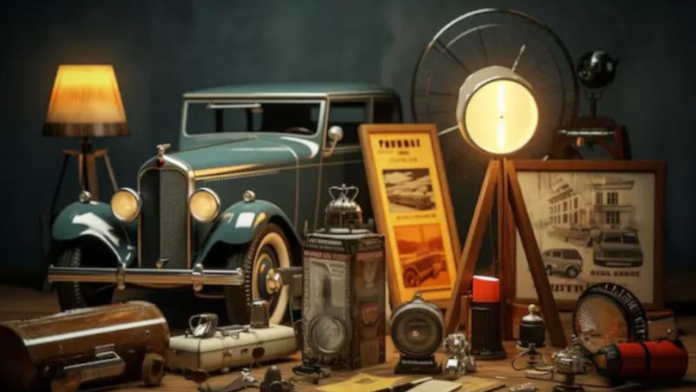There is something about vintage photos that is irresistible to us; part of what makes them so appealing, however, lies in the brown pigment, which lends them a timeless appearance. This particular brown pigment found on vintage pictures is a sepia tone developed from special chemical treatments used in early photography. Nevertheless, many people tend to question why this unique coloration exists and what accounts for its aesthetic value.
Understanding the science behind the brown pigment in vintage photos can shed light on its enduring popularity. It’s not only that the sepia effect preserves an image but also adds artistry to it, making such photographs stand out. Consequently, understanding both its historical nature and the technical issues associated with it will enable one to appreciate the beauty and importance of this kind of photographic technique.
What Is Brown Pigment In Vintage Photos?
As for how brown pigment appears on aged photographs, it is primarily due to their production using sepia toning, a method that emerged by the mid-19th century. A sepia solution treatment was employed under this technique where metallic silver present within the photo would chemically change into another more stable compound, thus giving it a rich brown color. In addition to extending the life of the photograph itself, this process imparts a warm, nostalgic feeling that remains instantly recognizable.
Sepia toning was invented as a way to extend the lifespan of photographic prints. Early black-and-white photos were susceptible to fading and other forms of deterioration, whereas sepia toning created tougher alternatives. Such photos could withstand time better than those that had no such treatment since they converted the silver image into a much more stable form. From then onwards, brown pigments became synonymous with vintage/historical photography.
With time, people began appreciating sepia-toned photographs for their aesthetic value rather than just their durability. The brown shades have a warm and ageless feel, bridging the gap between the past and present. Sepia toning has thus remained popular not only among those who want to preserve old photos but also in modern photography that emulates an old look.
The Science Behind Brown Pigment
The science behind the brown pigment in vintage photos involves a combination of chemistry and artistry. Commonly chemicals such as sepia, selenium or gold chloride are used during sepia toning process to change the silver in the photographic print’s chemical structure. On treatment with sepia toner black and white photograph forms silver sulfide which has a definite shade of brown.
Compared to metallic silver, silver sulfide is much more stable hence fading and degradation agents from environment do not easily affect sepia toned photographs. This transformation serves two purposes, safeguarding the image as well as increasing its appeal. In contrast to black-and-white images where there is strong differentiation between dark and light, soft warmer hues of silver sulphide form an ideal alternative in terms of aesthetics.
The sepia toning process can be adjusted to produce various degrees of brown coloration, thus enabling the photographer to attain their desired aesthetic effects. The concentration of the sepia solution and the length of time in toning determines the intensity of the brown pigment. This has made sepia toning a versatile tool for photographers historically as well as in contemporary practice.
Aesthetic Appeal of Brown Pigment in Vintage Photos
The beauty of brown pigment in old photos is that it induces nostalgia and a timeless appeal. Sepia’s warm, earthy tones create an atmosphere that is inviting and reflective at the same time, drawing viewers into pictures and making them linger longer. This emotional connection is one reason why, even during this digital era, sepia-toned pictures are still favored by many people.
Sepia tones reduce contrast in a photograph, creating a more balanced image. The effect can be used to highlight subject matter and bring out details which might be obscured in a high-contrast black-and-white picture. It adds depth and richness with its brown pigments that make it appear more solid and natural like a real life object.
Furthermore, apart from being visually stunning, the sepia tone brings historical nostalgia that makes it even more interesting. It reminds us of some last days gone by that reminded us of how things used to be simpler before they got complex. As such, these images are particularly suitable for storytelling purposes since they emanate historical traits that modern colored photography cannot convey.
Famous Examples of Brown Pigment in Photography
There are numerous famous examples of brown pigment photography where powerful moments or iconic figures have been captured using sepia-toned photographs. One such instance is Matthew Brady, who was an American Civil War photographer during the 19th century. His sepia-tinted photos depict this violent period with magnificent beauty; saving the faces and scenes on films portraying different aspects of war torn nationhood.
Another example involves Julia Margaret Cameron, whose portraiture is known for its expressive and artistic sepia. Her use of sepia brought a mystical air into her shots, underlining the emotional depth her sitters had and making them timeless art pieces. Her work has influenced countless photographers and continues to be celebrated for its innovation and beauty.
The sepia-toned images captured by early photographers like Brady and Cameron have left an indelible mark on the history of photography. These photographs do not only document significant events or individuals but also reflect why sepia toning is an enduring technique in art. They are a testimony to how brown pigment can make pictures that are visually stunning as well as historically impactful.
How to Preserve Brown Pigment in Vintage Photos
To keep vintage photos looking their best, it is important to handle with care due to environmental factors. Storing such photos in a stable environment where both temperature and humidity are controlled is one way of preserving them properly. Changes in temperature or humidity may lead to fading of sepia tones as well as deterioration of photographic papers.
The preservation of vintage photos requires storing them in archival-quality materials. To prevent chemical reactions that result into fading and discoloration, it is important to use acid-free photo albums, sleeves and boxes. Moreover, care should be taken not to expose such photos either on direct sunlight or even artificial light as light exposure can speed up the process of fading.
Preservation also involves regular inspection of vintage photographs for any kind of damages or signs that emanate from deterioration. It would be wise to bring in an expert conservator specialized in restoring photographs if situations like molds growth or paper degradation are noticed. Following these precautions may preserve sepia-toned photography for implementation by future generations.
Modern Uses for Brown Pigment Techniques
Although originally a way of preserving photographic printouts, sepia toning is currently adopted by modern photographers for style purposes. A good number of contemporary photographers employ brown pigment tones to create an old-time look in their images; this aspect taps into the artistic qualities found within brown pigments. Consequently, it has become possible for photographers to experiment with the above traditional appearance through the application of sepia effects on current digital images using image editing software.
On the other hand, sepia tones majorly find applications in portrait photography because they have a timeless and elegant outcome. These hues usually warm up facial features while giving a sense of depth and dimensionality to picture. In addition, wedding and engagement photography often feature pictures with sepia tones which give them a romantic feel.
In fine art photography today, artists still prefer to use the sepia tone technique, which creates images that are evocative and emotionally connected with the viewership experience. With respect to memory exploration and cultural identities, relationships between themes involving brown tone pigment used by artists to explore history are established.
Conclusion
A great attraction of brown pigment on old photos is its ability to create warmth, nostalgia and timelessness. Since it was first introduced in the mid-19th century until today, the sepia toning has been found to be a very flexible and long-lasting practice. It is not only sophisticated, but also useful in preserving photographs for future generations.
Through understanding the science behind sepia toning, appreciating its historical significance and learning how to preserve and use this technique we can continue to enjoy the beauty and emotional impact of brown pigment in photography. For those who love vintage photos or photographers willing to try their hands with sepia tones, sepia’s timeless appeal is irresistible.
FAQs
Q1: What does Sepia-toned mean?
Sepia toning refers to a process where black-and-white photographs are changed into warm brown images. Treatment of these images with sepia solution changes chemically the silver salts forming this image leading them to become more stable and visually appealing with a change in color.
Q2: Why do many antique pictures contain a brown pigmentation?
The use of sepia toning explains why many vintage photos have a brown pigmentation. The objective was enhancing durability of black-and-white images against fading. The modification of silver salts resulted in a warm look that resembles old times.
Q3: Can digital cameras create Sepia-toned pictures?
Sepia toned photos can also be created using digital camera through editing software. Many of these programs have sepia filters and other adjustments that can make your images look more like traditionally sepia-toned photographs. The photo-editing process is faster and hence users are able to achieve the desired look.
Q4: What are famous examples of Sepia-toned photography?
Famous sepia-toned photographs were taken by photographers in the 19th century among them include Matthew Brady and Julia Margaret Cameron. For example, most of her sepia-toned portraits and his war pictures are iconic samples where this technique was employed to document historical events and express different emotions.





